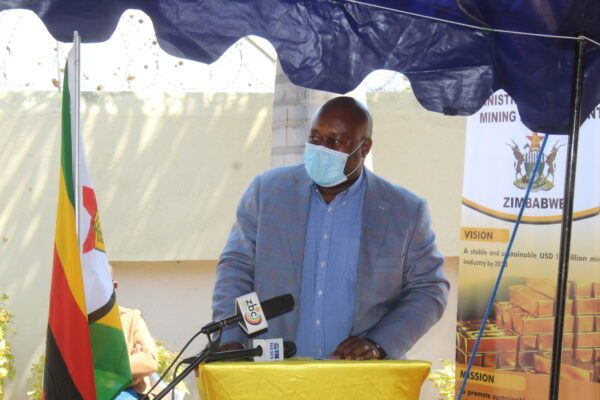‘US$12bn mining output by next year’

Mines and Mining Development Minister Winston Chitando is confident that the mining sector will achieve US$12 billion output by next year as new mines come on stream.
The target is critical to the realisation of the National Development Strategy 1 and the Vision 2030 that of achieving an upper middle income economy.
The sector in 2019 generated US$3,2 billion and US$5 billion in 2021, while also contributing 60 percent of export receipts and 13 percent to the country’s gross domestic product.
Minister Chitando made the remarks yesterday while making a presentation titled “Responsible and Sustainable Mining Pursuant of Vision 2030” to participants of the national defence course at the National Defence University.
“The mining sector intends to grow to US$12 billion by 2023. What it means is that it is the citizens of this nation who will ensure that the country develops if we look at the national thrust and the key resistance, the national thrust is to have inclusive is to have social development, macroeconomic stability and financial re-engagement and the national key results sustainable economic growth,” he said.
“When it comes to development, the country has to identify its key competent drivers for economic development and focus on and in particular case the nation mining is the largest economic driver.”
The national policy “Zimbabwe is open for business” has enabled mining sector to move towards achievement of US$12 billion mining economy by 2023 with more investors to the sector coming on board.
“The country has highly diversified mineral endowment; investment opportunities therefore exist across entire mining value chain. The country is still under-explored and there is huge potential for new discoveries, particularly using the modern exploration techniques.”
The country was endowed with great mineral potential with over 60 minerals with only 10 being commercially mined presently.
“Over 4 000 recorded gold deposits, all of them located on ancient workings, with more than 90 percent of these deposits associated with green-stone belts which are considered to be some of the richest in the world.”
“Zimbabwe hosts the second largest platinum group metals resource in the world on the Great Dyke. Potential outside the great dyke still to be investigated while we have large reserves of both thermal and coking coal in the mid-Zambezi basin and the Save-Limpopo basin, with more than 26 billion tonnes of coal resource.”
He said investment opportunities exist across the entire mining value chain which includes exploration, mining and extraction and across linkages with entire economy which include local value addition support services.
Commenting on sustainable mining, Minister Chitando called on players to be compliant with all laws among them Mines and Minerals Act, EMA Act, Labour Laws, and the regulations relating to fiscal provisions and marketing of minerals.
On value addition he said the main thrust was on mineral beneficiation along the mining value chain to convert the country’s mineral resources into a catalyst for economic growth.
Under the beneficiation programme local value chains will see gold, diamonds and semiprecious stones being turned into jewellery manufacturing, and chromite, iron, nickel and carbon from coal channelled to steel manufacturing and downstream engineering products while hydrocarbons will produce power generation petrochemicals and fertilisers.
Minister Chitando said as part of the commitment to institute digital systems, his ministry will soon complete migration from the manual, to automation of the computerised mining cadastre information system which is meant to meant to expedite the process of mining administration and mineral accountability.


